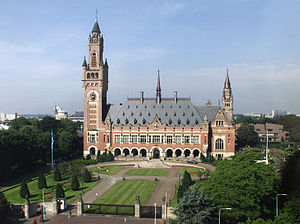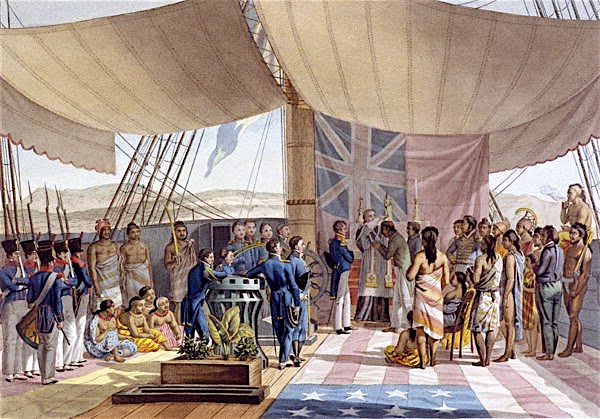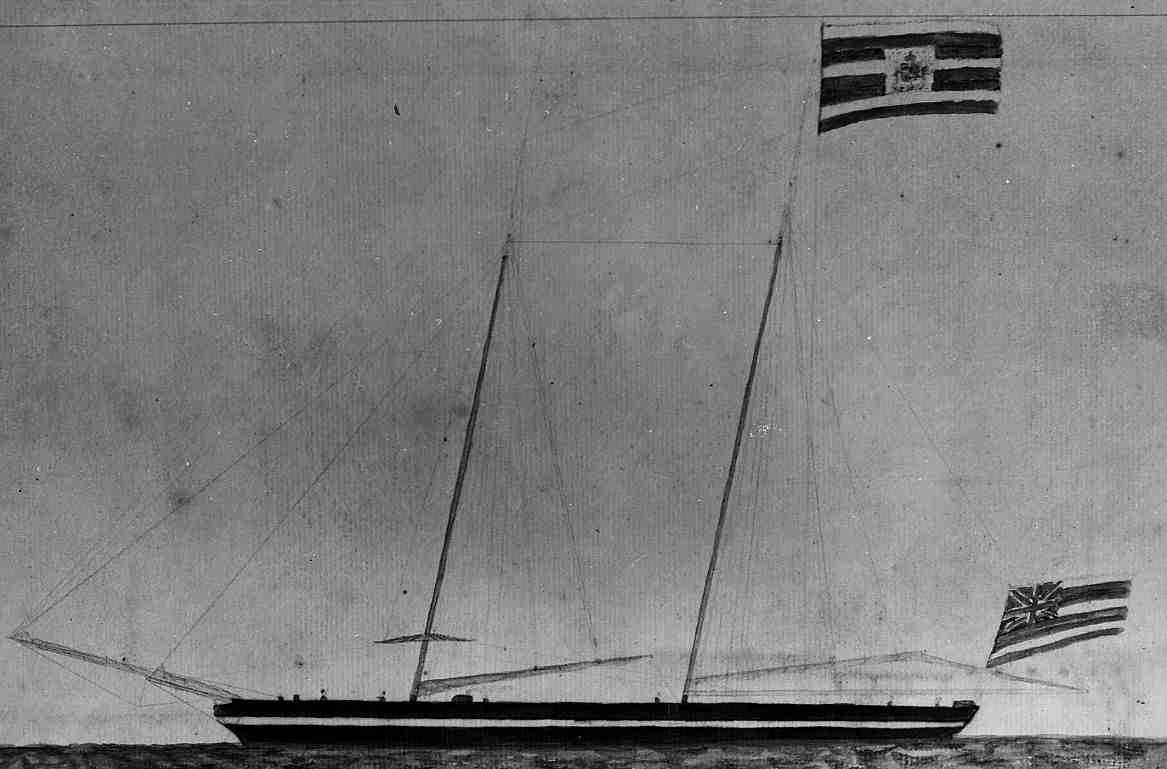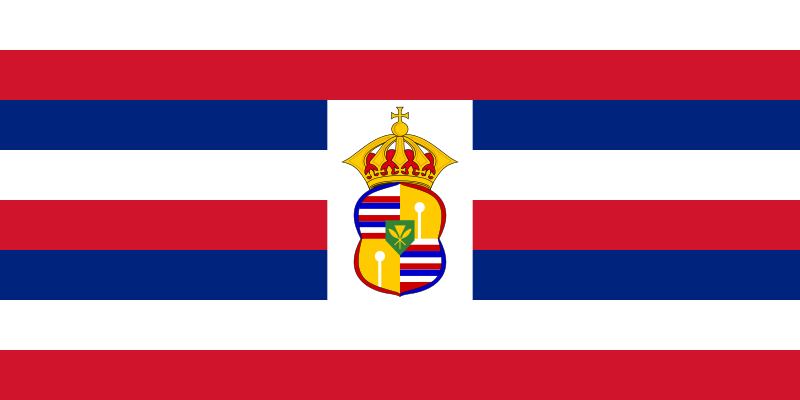Category Archives: Uncategorized
Hawaiian Kingdom files Application Instituting Proceedings at the International Court of Justice
THE HAGUE, NETHERLANDS, 27 September 2013 — The acting Government of the Hawaiian Kingdom filed with the Registrar of the International Court of Justice an Application Instituting Proceedings against the Republic of Austria, Barbados, the Kingdom  of Belgium, the Republic of Botswana, the Republic of Bulgaria, the Republic of Costa Rica, the Republic of Côte d’Ivoire, Democratic Republic of the Congo, the Kingdom of Denmark, the Republic of Djibouti, the Commonwealth of Dominica, the Dominican Republic, the Arab Republic of Egypt, the Republic of Finland, Gambia, Georgia, the Hellenic Republic of Greece, the Republic of Guinea, the Republic of Guinea-Bissau, the Republic of Haiti, the Republic of Honduras, the Republic of Ireland, the Republic of Kenya, the Kingdom of Lesotho, the Republic of Liberia, the Grand Duchy of Luxembourg, the Republic of Madagascar, the Republic of Malawi, the Republic of the Marshall Islands, the United Mexican States, the Kingdom of the Netherlands, the Kingdom of Norway, the Islamic Republic of Pakistan, the Republic of Paraguay, the Republic of Peru, the Republic of Senegal, the Republic of South Sudan, the Republic of Suriname, the Kingdom of Swaziland, the Kingdom of Sweden, the Swiss Confederation, the Democratic Republic of Timor-Leste, the Togolese Republic, the Republic of Uganda, and the Oriental Republic of Uruguay for treaty violations and serious breaches of peremptory norms. Austria, Belgium, Denmark, Netherlands, Norway, Sweden, and Switzerland have treaties with the Hawaiian Kingdom. All (45) States have accepted the jurisdiction of the Court beforehand, including the Hawaiian Kingdom.
of Belgium, the Republic of Botswana, the Republic of Bulgaria, the Republic of Costa Rica, the Republic of Côte d’Ivoire, Democratic Republic of the Congo, the Kingdom of Denmark, the Republic of Djibouti, the Commonwealth of Dominica, the Dominican Republic, the Arab Republic of Egypt, the Republic of Finland, Gambia, Georgia, the Hellenic Republic of Greece, the Republic of Guinea, the Republic of Guinea-Bissau, the Republic of Haiti, the Republic of Honduras, the Republic of Ireland, the Republic of Kenya, the Kingdom of Lesotho, the Republic of Liberia, the Grand Duchy of Luxembourg, the Republic of Madagascar, the Republic of Malawi, the Republic of the Marshall Islands, the United Mexican States, the Kingdom of the Netherlands, the Kingdom of Norway, the Islamic Republic of Pakistan, the Republic of Paraguay, the Republic of Peru, the Republic of Senegal, the Republic of South Sudan, the Republic of Suriname, the Kingdom of Swaziland, the Kingdom of Sweden, the Swiss Confederation, the Democratic Republic of Timor-Leste, the Togolese Republic, the Republic of Uganda, and the Oriental Republic of Uruguay for treaty violations and serious breaches of peremptory norms. Austria, Belgium, Denmark, Netherlands, Norway, Sweden, and Switzerland have treaties with the Hawaiian Kingdom. All (45) States have accepted the jurisdiction of the Court beforehand, including the Hawaiian Kingdom.
The filing of the Application is directly tied to the Hawaiian Kingdom’s Protest and Demand filed with the President of the United Nations General Assembly on August 10, 2012. The Application is seeking enforcement of the Hawaiian Kingdom’s Demand that States comply with their treaty obligations and obligations under customary international law.
Also submitted with the Application was a Request for the Indication of Provisional Measures of Protection. The request states the “fact that serious breaches of rules of jus cogens have been ongoing for over a century only amplifies the urgent request that the Court indicate provisional measures to protect and preserve the rights of the Hawaiian Kingdom.” The Court is requested to declare that:
a) All member States of the United Nations, which includes the States herein named, in compliance with the duty of non-recognition imposed under Articles 41(1) and 41(2) of the Articles of State Responsibility for International Wrongful Acts, are under an obligation:
1) to recognize the illegality and invalidity of the United States of America’s continued presence in the Hawaiian Kingdom;
2) to refrain from lending any support or any form of assistance to the United States of America with reference to its illegal occupation of the Hawaiian Kingdom;
3) to abstain from entering into treaty relations with the United States of America in all cases whereby the government of the United States of America purports to act on behalf of or concerning the Hawaiian Kingdom;
4) to abstain from sending consular agents to the territory of the Hawaiian Kingdom, purportedly under arrangements and/or agreements with the United States of America, and to withdraw any such agents already there;
5) to abstain from entering into economic, military and any other form of relationship or dealing with the United States of America on behalf of or concerning the Hawaiian Kingdom, which may entrench its authority over the territory;
b) With respect to existing bilateral treaties, member States of the United Nations, which includes the States herein named, in compliance with the duty of non-recognition imposed under Articles 41(1) and 41(2) of the Articles of State Responsibility for International Wrongful Acts, must abstain from invoking or applying those treaties or provisions of treaties concluded by the United States of America on behalf of or concerning the Hawaiian Kingdom, which include and/or involve active intergovernmental co-operation.
c) With respect to multilateral treaties, however, the same rule cannot be applied to certain general conventions such as those of a humanitarian character, the non-performance of which may adversely affect the people of the Hawaiian Kingdom;
d) All member States of the United Nations, which includes the States herein named, in compliance with the duty of non-recognition imposed under Articles 41(1) and 41(2) of the Articles of State Responsibility for International Wrongful Acts, should not result in depriving the people of the Hawaiian Kingdom of any advantages derived from international co-operation. In particular, while official acts performed by the Government of the United States of America on behalf of or concerning the Hawaiian Kingdom since the occupation began on 12 August 1898 are illegal and invalid, this invalidity cannot be extended to those acts, such as, for instance, the registration of births, deaths and marriages, the effects of which can be ignored only to the detriment of the inhabitants of the Territory.
e) With respect to non-member States of the United Nations, the illegality of the United States of America’s presence in the Hawaiian Kingdom is opposable to all States in the sense of barring erga omnes the legality of a situation which is maintained in violation of international law: in particular, no State which enters into relations with the United States of America concerning the Hawaiian Kingdom may expect the United Nations or its Members to recognize the validity or effects of such relationship, or of the consequences thereof.
The acting Government of the Hawaiian Kingdom designated David Keanu Sai, Ph.D., its Ambassador-at-large, as Agent for these proceedings, and Dexter Ke‘eaumoku Ka‘iama, Esq., its Attorney General, as Deputy Agent. Dr. Sai served as lead Agent for the Hawaiian Kingdom in Larsen v. Hawaiian Kingdom (1999-2001) and presented oral arguments at the Peace Palace on December 7, 8, and 11, 2000. Members of the arbitral tribunal included Professor James Crawford, SC, as presiding arbitrator, with Mr. Gavan Griffith, QC, and Professor Christopher Greenwood, QC, serving as associate arbitrators. Professor Greenwood is now a Judge of the International Court of Justice. Both the Permanent Court of Arbitration and the International Court of Justice are located in the Peace Palace, The Hague, Netherlands.
 While in The Hague, Dr. Sai also met with a member of the International Criminal Court’s Information & Evidence Unit at the Court’s headquarters to inquire into the status of the Hawaiian Kingdom’s Referral to initiate an investigation for war crimes. He confirmed that it is still under review and that the Office of the Prosecutor will be in communication shortly.
While in The Hague, Dr. Sai also met with a member of the International Criminal Court’s Information & Evidence Unit at the Court’s headquarters to inquire into the status of the Hawaiian Kingdom’s Referral to initiate an investigation for war crimes. He confirmed that it is still under review and that the Office of the Prosecutor will be in communication shortly.
Dr. Keanu Sai to Present Hawai‘i’s Occupation to Swiss Diplomats in Zurich
 The Swiss Diplomats – Zurich Network has invited Dr. Keanu Sai to the city of Zurich to give a presentation on the prolonged and illegal occupation of the Hawaiian Kingdom. The title of Dr. Sai’s presentation is “Hawai‘i – An American State or a State Under American Occupation.” Professor Niklaus Schweizer, a former Swiss Consul for Hawai‘i and a professor at the University of Hawai‘i at Manoa, will be giving the introduction. After the presentation there will be a panel discussion comprised of Dr. Sai, Professor Schweizer, and former Swiss Ambassador to the United States and Germany, Dr. Christian Blickenstorfer. The presentation and panel is scheduled for Monday, November 11, 2013.
The Swiss Diplomats – Zurich Network has invited Dr. Keanu Sai to the city of Zurich to give a presentation on the prolonged and illegal occupation of the Hawaiian Kingdom. The title of Dr. Sai’s presentation is “Hawai‘i – An American State or a State Under American Occupation.” Professor Niklaus Schweizer, a former Swiss Consul for Hawai‘i and a professor at the University of Hawai‘i at Manoa, will be giving the introduction. After the presentation there will be a panel discussion comprised of Dr. Sai, Professor Schweizer, and former Swiss Ambassador to the United States and Germany, Dr. Christian Blickenstorfer. The presentation and panel is scheduled for Monday, November 11, 2013.
On July 20, 1864, the Hawaiian Kingdom entered into a Treaty of Friendship, Establishment and Commerce with Switzerland that established perpetual peace and reciprocal liberties. Article 1 states: “Hawaiians shall be received and treated in every canton of the Swiss Confederation, as regards their persons and their properties, on the same footing and in the same manner as now are or may hereafter be treated, the citizens of other cantons. The Swiss shall enjoy in the Hawaiian Islands all the same rights as Hawaiians in Switzerland.” The treaty was negotiated on behalf of the Hawaiian Kingdom by Sir John Bowring, who was a Knight Bachelor of Great Britain and Commander of the Order of Leopold of Belgium. The Hawaiian-Swiss Treaty has not been terminated by either the Hawaiian Kingdom or the Swiss Confederation.
The Diplomatic Network is aware of the Hawaiian-Swiss Treaty, the Hawaiian arbitration, Larsen v. Hawaiian Kingdom, at the Permanent Court of Arbitration at the Hague, Netherlands, from 1999-2001, the Hawaiian complaint filed with the United Nations Security Council in 2001, and the Hawaiian protest and demand filed with the United Nations General Assembly in 2012. Dr. Sai served as lead agent in the arbitration proceedings and the filings with the United Nations.
The Hawaiian National Flag and Royal Flag
Another example of misinformation centers on the Hawaiian national flag. Lately, there is a common misunderstanding that the current flag that has the Union Jack at the top left corner is not Hawaiian, but rather British that was imposed here in the islands in 1843 by British Naval Officer Lord Paulet. According to the story published in the Honolulu Adverstiser in 2001, Gene Simeona of Honolulu, stated “he resurrected the ‘original’ Hawaiian green, red and yellow striped flag, destroyed by British navy Capt. Lord George Paulet when he seized Hawai‘i for five months in 1843.” Sonoda calls this flag the Kanaka Maoli flag.
A very simple way to falsify or refute this claim is to show that the flag with the Union Jack existed before 1843. There is a lot of evidence that refutes this claim such as ship logs of foreign ships that visited the islands since 1816, which is the date the flag was created by order of Kamehameha I. Below are two portraits painted around 1819. The first portrait was painted in 1819 of the baptism of Kalanimoku, the Hawaiian Kingdom’s former Prime Minister on board the French ship Uranie after the death of Kamehameha I, and the second portrait was done sometime after 1819 of the Hawaiian ship commanded by Captain Alexander Adams during the reign of Kamehameha II. Both ships had the presence of Kamehameha II.
The second portrait is also called a flagship that has both the national flag and the royal flag. The royal flag, also called the royal ensign, is a flag that signals the presence of the Hawaiian monarch and in this portrait it signaled the presence of Kamehameha II on board. The royal ensign also flies at the residence of the Hawaiian monarch and wherever the monarch travels.
Sonoda’s claim that the Union Jack symbolizes British colonialism in Hawai‘i is also not accurate, because Kamehameha I joined the British Empire voluntarily, along with his principle chiefs, on February 25, 1794, when Kamehameha entered into an agreement with British Captain George Vancouver. The agreement provided that the British government would not interfere with the kingdom’s religion, government and economy—“the chiefs and priests, were to continue as usual to officiate with the same authority as before in their respective stations.”
If the island Kingdom of Hawai‘i was colonized, Kamehameha would not have maintained the status of King, but would have been replaced by a British Governor-General. Queen Victoria recognized the Hawaiian Kingdom as an independent and sovereign State on November 28, 1843 after Lord Paulet’s seizure from February to July 1843. Therefore, Sonodo’s other claim of Lord Paulet’s seizure is true, but there is no evidence that the green, red and yellow striped flag ever existed.




